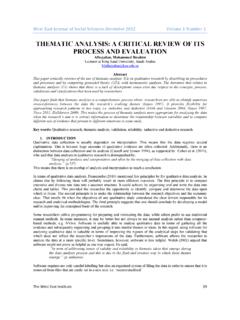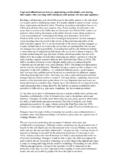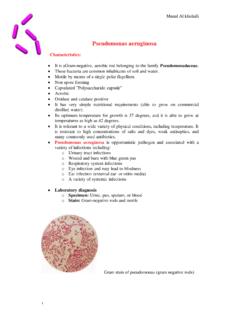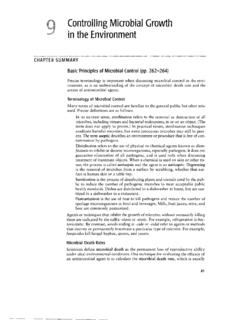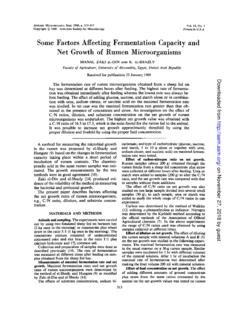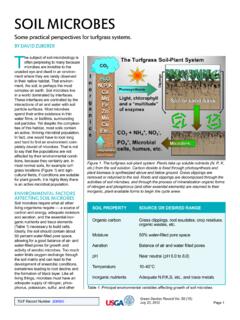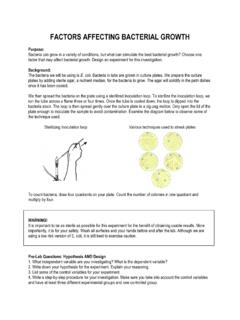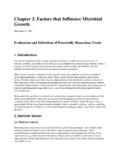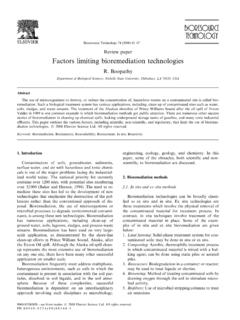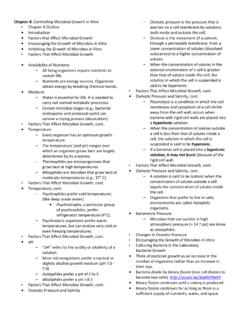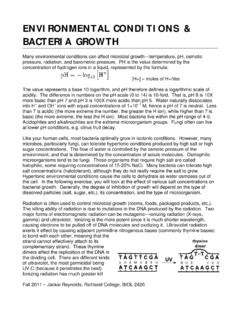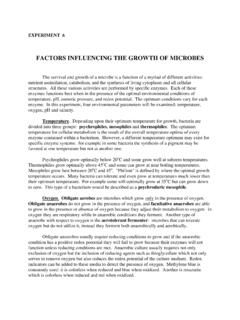Transcription of Factors affecting bacterial growth - KSU Faculty
1 Factors affecting bacterial growth Factors affecting bacterial growth are: 1. Oxygen requirement. 2. Temperature requirement. 3. PH. 4. Osmotic pressure (salt tolerance). 1) Oxygen requirement: Bacteria are divided into four groups according to oxygen requirement: 1. Bacteria grow only in the presence of oxygen, called: strict aerobes. 2. Bacteria grow only in the absence of oxygen, called: strict anaerobe. 3. Bacteria grow in the presence or absence of oxygen, called: facultative anaerobe. 4. Bacteria grow in a little amount of oxygen, called: micro aerophilic In our bodies: - The aerobic places: skin, eye, mouth, throat, nose. - The anaerobic places: deep in tissue, large intestine.
2 - The micro aerobic: upper part of stomach. How to achieve anaerobic condition: 1. Anaerobic hood. 2. Anaerobic jar: use gas generating kit which contains chemicals to consume the oxygen present in the jar. - We add 10 ml water to the gas kit. - Chemial+H2O-----> H2 + CO2. - H2 + O2 (in jar) --catalyst---> H2O (appear as droplet in the jar). Catalyst: use it to speed up the reaction between H2 and O2. To check anaerobic condition we use: 1- Chemical indicator: Called: Redox dye. It is a yellow strip and it turns green or blue in the presence of O2. 2- Biological indicator: Use: Strict aerobic bacteria, if it didn't grow that means= anaerobic condition.
3 Or we use: Strict anaerobe bacteria, if it grows that's mean = anaerobic condition 2) Temperature requirement: Bacteria are divided into three groups according to temperature requirement: 1. Bacteria grow at cold temp. (4-10 C), called: Psychrophilic. 2. Bacteria grow at 15- C, called: Mesophilic (pathogenic bacteria). 3. Bacteria grow at 45-90 C, called: Thermophilic 3) PH: 1. Some bacteria grow at acidic PH (3-6), Called: Acidophilic. 2. Or grow at alkaline PH (8-10), Called: Alkelophilic /basophilic. 3. Most bacteria grow at neutral PH (7). 4) Osmotic pressure: Bacteria vary in their tolerance to salt levels. 1. Some cannot tolerate high concentration of salt.
4 2. Other can tolerate medium concentration of salt. 3. Some can tolerate high concentration of salt, called: halophilic.



